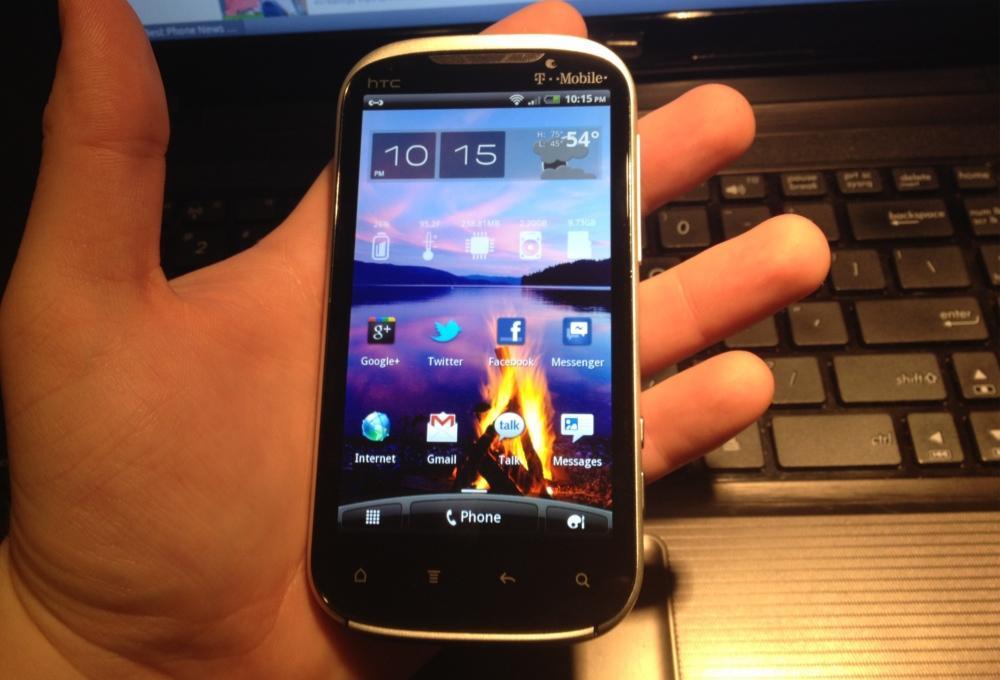
No matter which carrier you use, when it comes to Android, there is no shortage of options. HTC, Motorola, LG and Samsung have spread their many devices across all major US carriers and they come at varying price points and in all different sizes, colors and form factors. The chances of there being at least one Android phone out there that suits your needs are pretty high. Power in numbers, right?
Although having a wide selection of devices is never a bad thing, it's beginning to be a bit much to digest. And too many options makes it difficult on the consumer. But the real problem is the shelf life of the devices. Back in February, HTC claimed that the average shelf life of a cell phone used to be an astounding three years. Android's Law, however, cut that estimated shelf life down to anywhere from six to nine months.
That was February, this is October, and a lot has changed. A device shelf life of six months is now a stretch – we're now looking at two to three months. Sure, the carrier keeps the device in their lineup for much longer, and I'm sure they still sell some older devices to customers looking for a bargain. But in truth, those phones were likely dated by the time they actually hit the shelves, and were long forgotten a month or two after they launched.
Take the HTC Sensation 4G for example. It was easily one of the most-hyped phones of 2011. There's no doubt about it. The Sensation finally landed in May, but by the time it arrived, we were already informed of another Sensation-like device coming with added NFC support and a better camera. This slightly better device turned out to be the Amaze 4G, which was announced in September and launched earlier this month. There are also two other iterations of the Sensation floating about: the Sensation XL and Sensation XE.
But HTC isn't the only one guilty of saturating the market with too many phones. Samsung is also pretty bad for it. And Motorola is probably one of the worst, at least on Verizon. The DROID X2, DROID 3 and DROID BIONIC all launched within two months of each other, all looking strikingly similar (obviously excluding the slide-out QWERTY on the DROID 3) and touting very similar specifications across the board. We're about to enter November, and the DROID RAZR – a slight upgrade from the BIONIC which only landed last month – will soon arrive. I think this speaks for itself.
I figured as upgrades in specifications and different technologies began to plateau that device releases would eventually begin to slow down. But they haven't. If anything, they're speeding up. Older devices are slipping into oblivion faster than ever and upgrades from one device to another are becoming more and more incremental ... or evolutionary.
This is where Android OEMs could stand to be a little lot more like Apple. The Cupertino-based company, being the sole manufacturer of all iOS devices, has a fairly decent track record of launching one new device per year (16 months this go around). In a world where Android phones launch on nearly a weekly basis, this could seem like a bad thing for Apple, and it may prove to be in the long run as Android keeps rocking Apple's boat each year. But slow and steady wins the race.
I'm not saying Apple will overtake Android down the road; the chances of that happening in the foreseeable future are pretty slim. What I'm saying is Android OEMs should take a step back, slow things down and focus on just a handful of devices each year. Much like Samsung has done with their Galaxy lines thus far, HTC and Motorola should focus on launching one high-end smartphone per year, on all major US carriers. The same should be done with mid-range and low-end phones, too.
I can only imagine that each company is wasting millions, if not billions, each year in manufacturing costs, having to tweak the manufacturing process for each slightly different device. And what about the engineering and design process? When you consider that each manufacturer is going through this process now twenty or more times per year, the numbers start adding up, and they're not small. If they cut back to a handful of devices per year, not only could they cut back costs in a big way, they could also gain a little more customer loyalty and probably put together more solid and consistent devices.
All I know is these perpetual device launches, though they're admittedly great for our business, are getting out of hand. So tell me, readers. Are you tired of your phone being irrelevant as soon as you purchase it? Should manufacturers take a step back and focus on only three or four devices per year (in varying pricing tiers)?